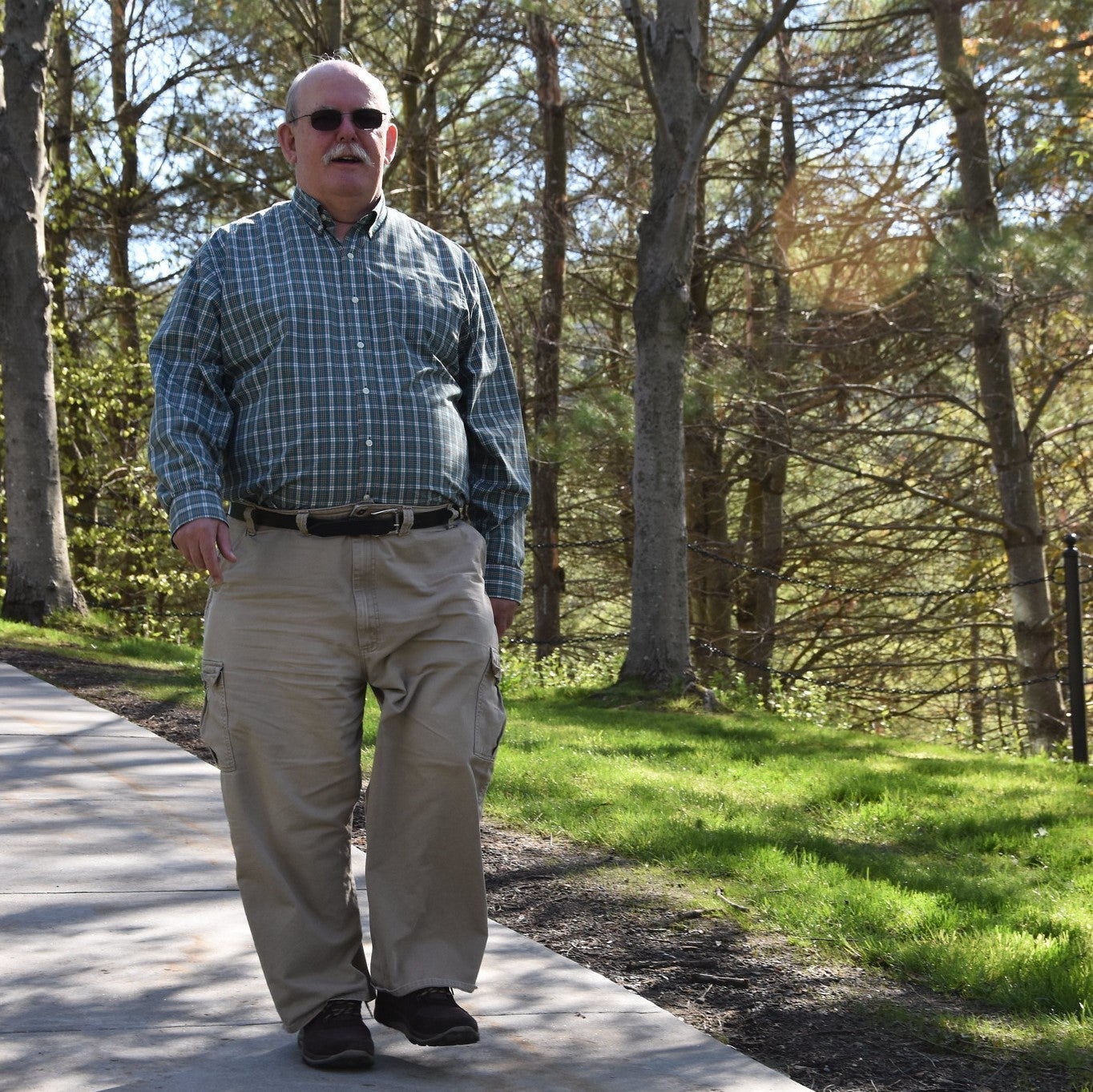Living Well: Taking Control of Your Chronic Condition
July 22, 2021Categories: Chronic Condition Care, MyHealthy Decisions, Bassett News
 Learning that a troubling pain or symptom is part of a chronic condition can feel overwhelming. There follows a cascade of changes to your mobility, diet, exercise, and quality of life.
Learning that a troubling pain or symptom is part of a chronic condition can feel overwhelming. There follows a cascade of changes to your mobility, diet, exercise, and quality of life.
"I panicked," admits F. Bjørnson Stock, a retired teacher from Cherry Valley, when asked about his recent diabetes diagnosis. "Almost all of the illnesses I've had in the past have been acute. I could take medication, visit my doctor, or see a specialist and make the illness go away. This will never go away.
"I felt like I had fooled around with my health for years," says Stock. "I would try to eat right, exercise, and lose weight. But eventually I always got angry and said, 'Forget this! I want my life back!' But with diabetes — I now had no other choice."
Coaching Not Scolding
Stock's panic is not uncommon.
"Managing an ongoing health condition can be overwhelming," explains Lynae Wyckoff. Wyckoff is a senior health educator who oversees Bassett Healthcare Network's Living Well program. "We provide self-management tools to help people living with diabetes, chronic pain, and other health conditions cope with day-to-day management of their situation."
In just a short time, Living Well's materials have transformed Stock's approach to his health.
"Let me share an analogy from teaching to explain the value of this program," says Stock. "Getting students to do their homework is sometimes a challenge. As a new teacher, I would read them the riot act. 'You need to do this or else!' Eventually, it dawned on me: It's not that my students were lazy, or didn't want to pass. Most of them had reasons for not doing their work. Maybe they didn't understand the assignment, or were disorganized, or needed a review. If we could figure out the reason, we could come up with a plan that would make them successful."
The Living Well program materials have made him stop, reflect, and create a plan to succeed. "First, you form a focused action plan and set goals," explains Stock. "But if you mess up, you don't yell at yourself, 'Why didn't I walk three miles? That's it — I can't do this!' Instead, you regroup and modify the plan."
Meeting health goals with a self-modified plan puts patients back in the driver's seat. "Participants that complete our program report feeling in control of their condition," says Wyckoff. "They are able to reduce pain with methods other than extra medication, decrease pain, and keep pain from interfering with sleep."
"I realize now that my problem has not really been eating and exercise," explains Stock. "I ate when I was bored. I didn't go walking because I had a condition that made it painful. So I adjust my strategy — for example, I do stretches to increase flexibility and reduce pain. And I set more attainable goals — a shorter walk up the hill near my house.
"How is it that I never made the connection between what I did as a teacher and what I needed to do to help myself? I am so thankful for this program."
Stronger Together
Stock also looks forward to the Living Well group meetings that he will be starting soon.
"I need to connect with people with similar conditions," he explains. "I need their company and I need their practical tips."
There are many ways to participate in Living Well. "We have mailed toolkits for people who prefer to learn on their own," explains Wyckoff. "If you enjoy the company and support of others, sign up for a Zoom workshop or a mailed toolkit with phone support. We also offer a national online version that allows people to login throughout the week as their schedule permits."
In the short time since he started working with the program materials, Stock has already lost some weight. "It's a start," he says. "And it's success. Even just a little bit of success can make us keep going."
